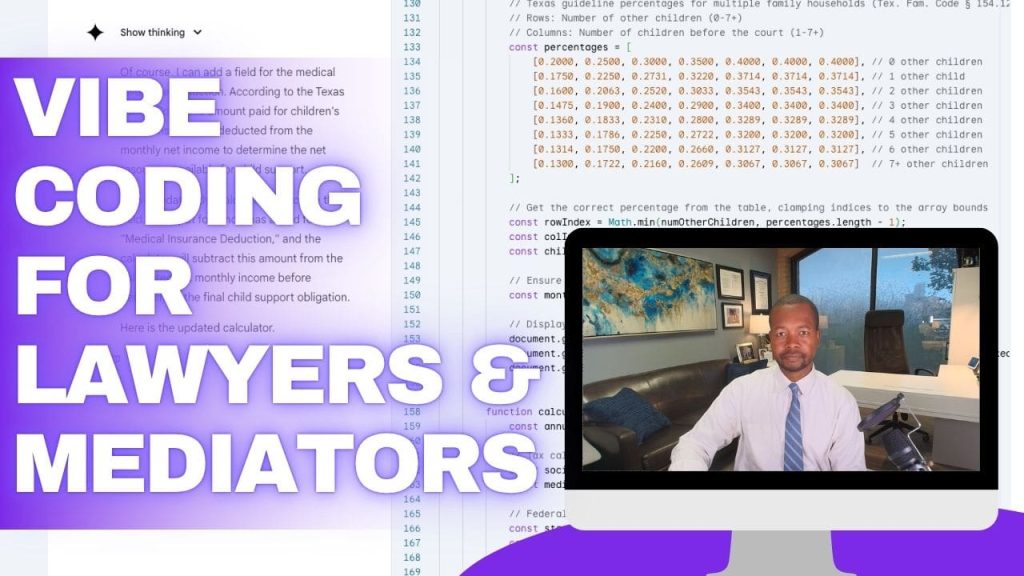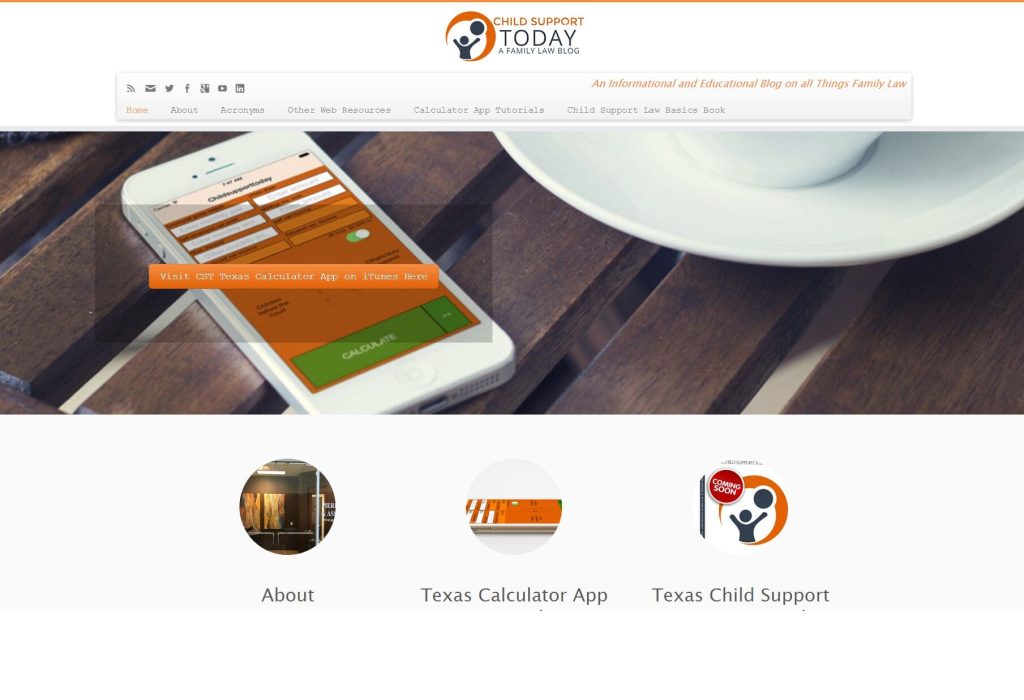Vibe Coding for Lawyers & Mediators

In 2015, I participated in creating a Texas child support calculator that I placed for sale on the Apple App Store. That project took many weeks during which I worked with a developer to produce a working app prototype.

This prototype provided accurate calculations to help lawyers, judges, and parents who needed a mobile-friendly tool to run support numbers on the go.
Fast forward 10 years to the AI age. In the video below, I use Gemini to create in real time a fully functioning Texas child support calculator application that operates like the state’s official web calculator. It even calculates payment obligation amounts accurately to within pennies of the state’s official numbers. This project took less than 10 minutes and commences at the 6:00-minute mark below. The AI prompt I used is at the bottom of the page in case you want to test it out yourself. You just need the government’s official 2025 tax chart PDF.
Vibe Coding for Lawyers & Mediators
This ability to create an application like a child support calculator simply by describing it into existence is called “vibe coding.” No software development, no costs, no time. We’ve entered a world where computer programming and web development are now in the hands of laypeople using artificial intelligence.
Most lawyers and mediators do not know how to code or build software. Using AI, they now gain a sort of superpower for creating custom work tools without needing extensive programming knowledge. This calculator is just one example. Imagine being able to build any of the following productivity tools without paying for them:
- A web form that collects client information and flags key details for review to streamline your practice’s onboarding process.
- An interest calculator for calculating interest owed on support debt or attorney fees.
- A document-generating tool that assembles from templates based on information provided by mediation parties.
- A calendar calculator tool that tabulates deadlines based on federal or state rules of procedure.
- A data analysis tool that analyzes case statistics or billing data to provide insights for your business strategy.
- A case update tool that runs a “scan” on new cases from specific jurisdictions and summarizes opinions.
This is no longer about “using AI” to be productive in your practice. It’s now about using AI to build actual tools to make you productive in your practice in ways you’ve never imagined. It’s not perfect, but for building your own work tools, it does not need to be. Your coding projects just need to work for you.
What Exactly is “Vibe” Coding?
Coined by Andrej Karpathy, a co-founder of OpenAI, vibe coding is an approach to software development in which you describe what you want a program to do using natural language prompts, and a large language model (LLM) generates the code for you. The idea is to forget the code is even there and you give in to the “vibes” of creating what you will just by using your will. There are instances where vibe coders go a bit too far and start stepping on the toes of others. But the practice is seen as empowering and liberating by making coding accessible to all.
What I demonstrate in the video above are 2 attempts at replicating the core functions of a preexisting Texas child support calculator on the web. The Gemini attempt was successful on the first try, although it needed 2 prompt edits. However, the Claude attempt was not successful (this time around). The outputs from the 2 attempts are a good demonstration about the usability of AI and to show how LLMs don’t always get it right. I did stop short of copying my successful Gemini-generated code from Gemini’s canvas to further develop it further into a more functional tool, like using it as a mobile app or as a computer program. Other tools exist that can help take “raw” Gemini, Claude, or ChatGPT-generated code and build them out in more professional coding environments. Paid AI-coding services like Replit, Cursor, and Windsurf can help turn any imagined amateur app into a polished, even resaleable, tool.
My Conclusion – Don’t “Learn to Code”
The phrase “learn to code” became popular some years back as encouragement to motivate people to jumpstart into new information-technology careers. What one discovers when jumping into coding is that it’s not for the faint-hearted. Python, JavaScript, CSS, even basic HTML can get hard for those who did not select a career in software development. With vibe coding, non-developers can take a stab at creating actual fully functioning programs without a deep understanding in coding or app-building. Vibe coding isn’t about making you a developer overnight; it’s about harnessing AI as an incredibly powerful assistant to build out custom solutions. Legal professionals can unlock a new realm of custom tools using vibe coding to help make their practices more efficient and responsive. Leave the coding to the coders and rely on their help when you need it. But for the basic stuff, you now have another set of tools to create something unique.
AI Prompt:
“I want to create a web-based child support calculator that operates similarly to the online calculator hosted on the Texas Attorney General website at the webpage https://csapps.oag.texas.gov/monthly-child-support-calculator. Recreate the calculator by incorporating the 2025 employed and self-employed persons tax charts so that it operates similarly to the Texas Attorney General calculator.”
